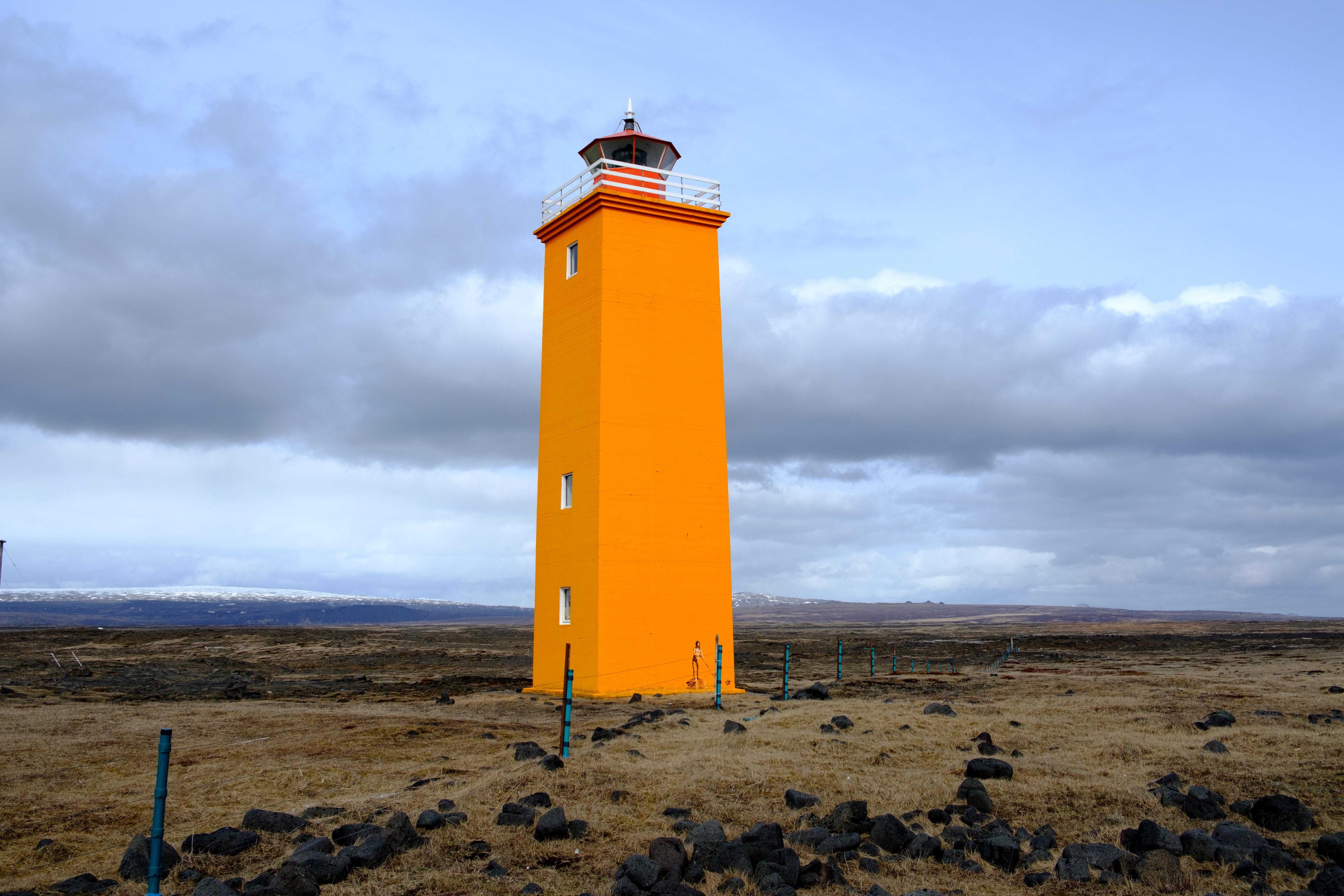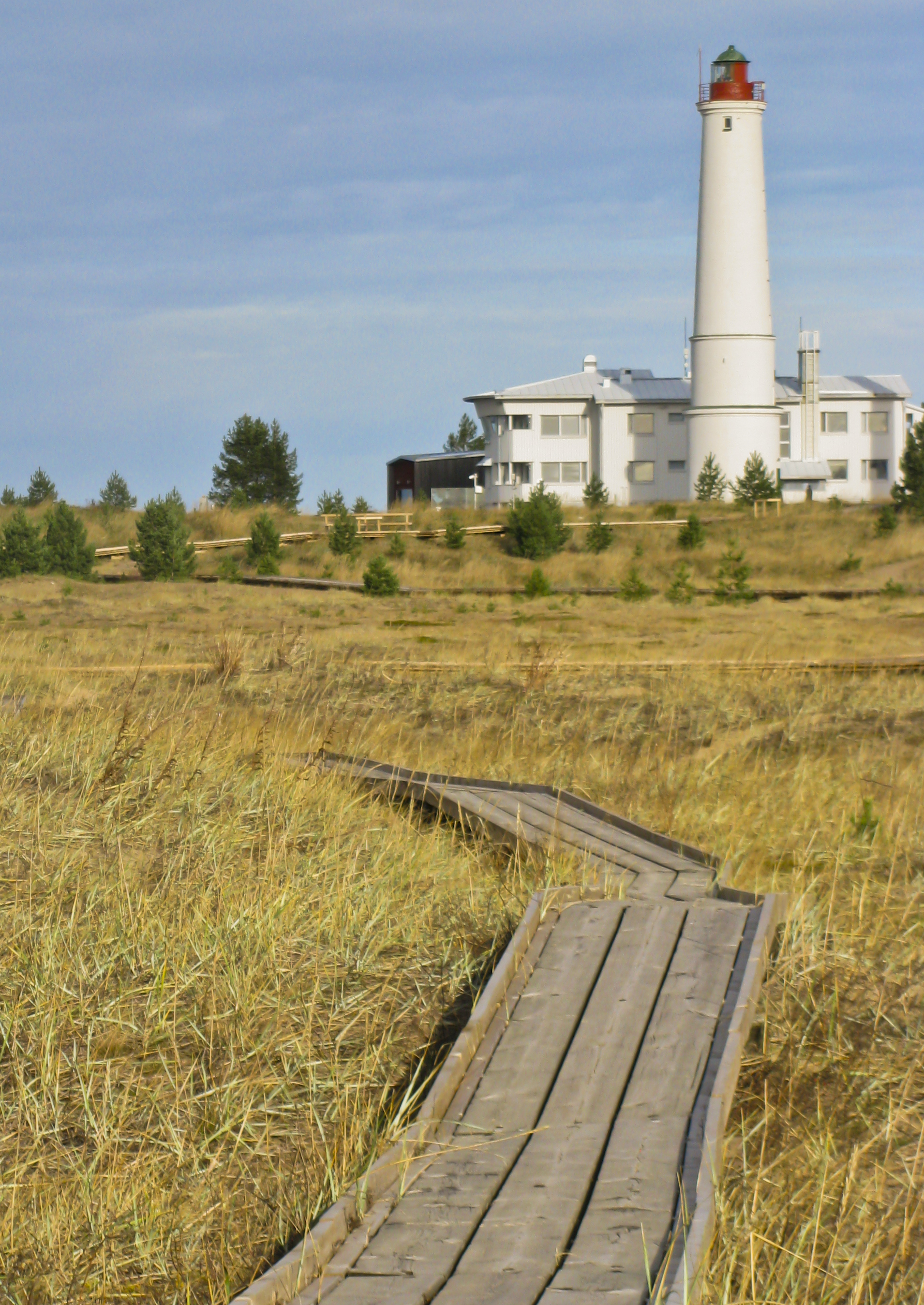|
Bjargtangar Lighthouse
The Bjargtangar Lighthouse ( , regionally also ) is a lighthouse located on the cliffs of Látrabjarg in northwestern Iceland. It marks the westernmost point of Iceland and is the westernmost building of Europe. History and description The Bjargtangar Light Station was established in 1913. The present tower was built in 1948. It is two stories high, built of concrete, and painted entirely white. The lantern house is on the second floor and faces the sea. Because the lighthouse is on a high cliff, the light's focal plane In Gaussian optics, the cardinal points consist of three pairs of points located on the optical axis of a rotationally symmetric, focal, optical system. These are the '' focal points'', the principal points, and the nodal points; there are two ... is above the sea. The site (but not the tower) is open to visitors, although access is difficult. See also * List of lighthouses in Iceland Notes Lighthouses completed in 1913 Lighthouses complet ... [...More Info...] [...Related Items...] OR: [Wikipedia] [Google] [Baidu] |
Westfjords
The Westfjords or West Fjords (, ) is a large peninsula in northwestern Iceland and an administrative region, the least populous in the country. It lies on the Denmark Strait, facing the east coast of Greenland. It is connected to the rest of Iceland by a seven-kilometre-wide isthmus between Gilsfjörður and Bitrufjörður . The Westfjords are mountainous; the coastline is heavily indented by dozens of fjords surrounded by steep hills. These indentations make roads very circuitous and communications by land difficult. In addition, many roads are closed by ice and snow for several months of the year. The Vestfjarðagöng road tunnel from 1996 has improved that situation. The cliffs at Látrabjarg comprise the longest bird cliff in the northern Atlantic Ocean and are at the westernmost point in Iceland. Drangajökull, the only glacier in the region, is located in the north of the peninsula and is the fifth-largest in the country. Westfjords is certified by the EarthCheck Su ... [...More Info...] [...Related Items...] OR: [Wikipedia] [Google] [Baidu] |
Lighthouse
A lighthouse is a tower, building, or other type of physical structure designed to emit light from a system of lamps and lens (optics), lenses and to serve as a beacon for navigational aid for maritime pilots at sea or on inland waterways. Lighthouses mark dangerous coastlines, hazardous shoals, reefs, rocks, and safe entries to harbors; they also assist in aerial navigation. Once widely used, the number of operational lighthouses has declined due to the expense of maintenance and the advent of much cheaper, more sophisticated, and more effective electronic navigational systems. History Ancient lighthouses Before the development of clearly defined ports, mariners were guided by fires built on hilltops. Since elevating the fire would improve visibility, placing the fire on a platform became a practice that led to the development of the lighthouse. In antiquity, the lighthouse functioned more as an entrance marker to ports than as a warning signal for reefs and promontory, prom ... [...More Info...] [...Related Items...] OR: [Wikipedia] [Google] [Baidu] |
Látrabjarg
Látrabjarg () is a promontory in the Westfjords of Iceland, and the westernmost point in Iceland. The cliffs are home to millions of birds, including puffins, northern gannets, guillemots and razorbill The razorbill (''Alca torda'') is a North Atlantic colonial seabird and the only extant member of the genus ''Alca (bird), Alca'' of the family Alcidae, the auks. It is the closest living relative of the extinct great auk (''Pinguinus impennis' ...s. It is vital for their survival as it hosts up to 40% of the world population for some species such as the razorbill. It is Europe's largest bird cliff, 14 km long and up to 440 m high. Gallery File:Iceland2008-Latrabjarg.bird.cliff.JPG File:Iceland2008-Latrabjarg.puffin.JPG File:Island Látrabjarg 10.JPG See also * Bjargtangar * Bjargtangar Lighthouse References External links Latrabjarg Westfjords Bird cliffs of Iceland Tourist attractions in Iceland {{iceland-geo-stub ... [...More Info...] [...Related Items...] OR: [Wikipedia] [Google] [Baidu] |
Iceland
Iceland is a Nordic countries, Nordic island country between the Atlantic Ocean, North Atlantic and Arctic Oceans, on the Mid-Atlantic Ridge between North America and Europe. It is culturally and politically linked with Europe and is the region's westernmost and most list of countries and dependencies by population density, sparsely populated country. Its Capital city, capital and largest city is Reykjavík, which is home to about 36% of the country's roughly 380,000 residents (excluding nearby towns/suburbs, which are separate municipalities). The official language of the country is Icelandic language, Icelandic. Iceland is on a rift between Plate tectonics, tectonic plates, and its geologic activity includes geysers and frequent Types of volcanic eruptions, volcanic eruptions. The interior consists of a volcanic plateau with sand and lava fields, mountains and glaciers, and many Glacial stream, glacial rivers flow to the sea through the Upland and lowland, lowlands. Iceland i ... [...More Info...] [...Related Items...] OR: [Wikipedia] [Google] [Baidu] |
Bjargtangar
Bjargtangar (, regionally also ) is the westernmost point of Iceland and is considered the westernmost point of Europe outside the mid-Atlantic archipelago of Azores (which are not classified as remote islands). It is the westernmost point in the Greenwich Mean Time Greenwich Mean Time (GMT) is the local mean time at the Royal Observatory, Greenwich, Royal Observatory in Greenwich, London, counted from midnight. At different times in the past, it has been calculated in different ways, including being ... (GMT) time zone. See also * Bjargtangar Lighthouse * Látrabjarg References External links Jan S. Krogh's Geosite on Bjargtangar Westfjords {{Iceland-geo-stub ... [...More Info...] [...Related Items...] OR: [Wikipedia] [Google] [Baidu] |
Focal Plane
In Gaussian optics, the cardinal points consist of three pairs of points located on the optical axis of a rotationally symmetric, focal, optical system. These are the '' focal points'', the principal points, and the nodal points; there are two of each. For ''ideal'' systems, the basic imaging properties such as image size, location, and orientation are completely determined by the locations of the cardinal points. For simple cases where the medium on both sides of an optical system is air or vacuum four cardinal points are sufficient: the two focal points and either the principal points or the nodal points. The only ideal system that has been achieved in practice is a plane mirror, however the cardinal points are widely used to the behavior of real optical systems. Cardinal points provide a way to analytically simplify an optical system with many components, allowing the imaging characteristics of the system to be approximately determined with simple calculations. Explanation ... [...More Info...] [...Related Items...] OR: [Wikipedia] [Google] [Baidu] |
List Of Lighthouses In Iceland
This is a list of lighthouses in Iceland. Lighthouses See also * Lists of lighthouses and lightvessels References {{Lighthouses in Europe Towers in Iceland Lists of lighthouses, Iceland Lists of buildings and structures in Iceland, Lighthouses Lighthouses in Iceland, Iceland transport-related lists, Lighthouses ... [...More Info...] [...Related Items...] OR: [Wikipedia] [Google] [Baidu] |
Lighthouses Completed In 1913
A lighthouse is a tower, building, or other type of physical structure designed to emit light from a system of lamps and lenses and to serve as a beacon for navigational aid for maritime pilots at sea or on inland waterways. Lighthouses mark dangerous coastlines, hazardous shoals, reefs, rocks, and safe entries to harbors; they also assist in aerial navigation. Once widely used, the number of operational lighthouses has declined due to the expense of maintenance and the advent of much cheaper, more sophisticated, and more effective electronic navigational systems. History Ancient lighthouses Before the development of clearly defined ports, mariners were guided by fires built on hilltops. Since elevating the fire would improve visibility, placing the fire on a platform became a practice that led to the development of the lighthouse. In antiquity, the lighthouse functioned more as an entrance marker to ports than as a warning signal for reefs and promontories, unlike many moder ... [...More Info...] [...Related Items...] OR: [Wikipedia] [Google] [Baidu] |
Lighthouses In Iceland
A lighthouse is a tower, building, or other type of physical structure designed to emit light from a system of lamps and lens (optics), lenses and to serve as a beacon for navigational aid for maritime pilots at sea or on inland waterways. Lighthouses mark dangerous coastlines, hazardous shoals, reefs, rocks, and safe entries to harbors; they also assist in aerial navigation. Once widely used, the number of operational lighthouses has declined due to the expense of maintenance and the advent of much cheaper, more sophisticated, and more effective electronic navigational systems. History Ancient lighthouses Before the development of clearly defined ports, mariners were guided by fires built on hilltops. Since elevating the fire would improve visibility, placing the fire on a platform became a practice that led to the development of the lighthouse. In antiquity, the lighthouse functioned more as an entrance marker to ports than as a warning signal for reefs and promontory, prom ... [...More Info...] [...Related Items...] OR: [Wikipedia] [Google] [Baidu] |



